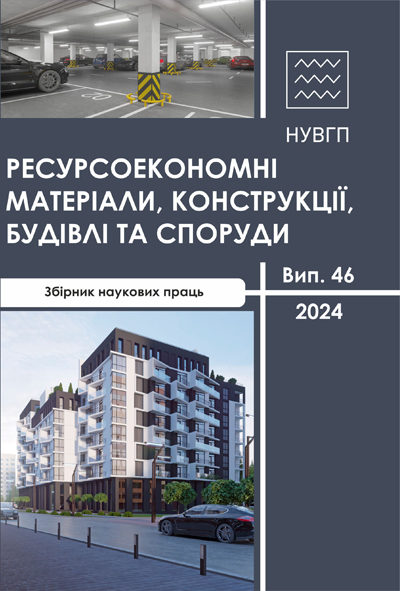CALCULATION OF MULTI-LAYERED GLASS STRUCTURES BASED ON THE CONCEPT OF EQUIVALENT THICKNESS AND THE FINITE ELEMENT METHOD
DOI:
https://doi.org/10.31713/budres.v0i46.31Abstract
The methodology of determining the equivalent thickness of laminated glass in accordance with EN16612 (2019) is presented. The process of selecting and calculating the requisite parameters is outlined in detail.
For a laminated glass consisting of three layers of annealed glass, 10 mm thick, bonded together with an EVASAFE polymer film, the equivalent thickness for calculating the bending deflection hef;w was calculated at a shear transmission coefficient of ω=0.1. The equivalent thickness for calculating the stresses in the lower glass layer hef;σ;1 was also calculated for the determined hef;w at ω=0.1.
The numerical model of a multi-layered glass plate with an equivalent thickness according to EN 16612 (2019) was constructed using the finite element method (FEM) with the LIRA-CAD software. The supports at the corners of the plate were designed with hinges. The stiffness of the elements corresponded to the ‘plate’ type. The physical non-linearity (non-linear elasticity) of glass was modelled using physically non-linear finite elements of the FE-241 type and the 14-piecewise linear function of deformation (strain-stress law).
As a consequence of the non-linear calculation, the results of the fracture at each stage of loading were obtained. The сrack initiation was recorded under non-linear loading, which exceeded the experimental critical load by 1.10 times. The largest calculated deflection was 2.88 times higher than the experimental deflection. The fracture pattern obtained from the non-linear FEM calculation in the LIRA-CAD software corresponded to the fracture pattern of annealed glass in multi-layered glass plates during full-scale experiments.
The non-linear behaviour of the plate was taken into account in order to develop an appropriate design scheme and model the life cycle of the structure.

